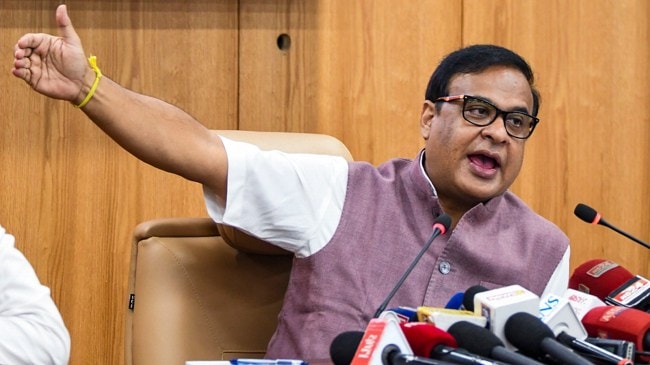ARTICLE AD BOX
 Assam Chief Minister Himanta Biswa Sarma addresses reporters in Guwahati on Tuesday. (Photo: PTI)
Assam Chief Minister Himanta Biswa Sarma addresses reporters in Guwahati on Tuesday. (Photo: PTI)

GuwahatiJul 16, 2025 13:25 IST First published on: Jul 16, 2025 at 13:24 IST
Assam Chief Minister Himanta Biswa Sarma has said that concerns over demographic changes in Assam cannot be addressed by “legal” steps such as voter list revision and a National Register of Citizens (NRC), emphasising that “indigenous solutions” are required instead.
As reported by The Indian Express, after the Election Commission of India last month announced a nationwide intensive revision of electoral rolls starting with Bihar, the Assam government requested that the NRC, which has been in limbo since 2019, be factored as one of the admissible documents for the SIR once it is finalised. If this request is accepted, it could effectively mean a delay in the state’s SIR.
While the NRC exercise was meant to address decades of demographic anxieties in Assam by identifying Indian citizens and distinguishing them from illegal immigrants, the draft NRC published in 2019 drew criticism from many quarters, including from the Assam government. It had excluded 19.6 lakh people from among 3.3 crore applicants, and the Assam government has maintained that the inclusions and exclusions in it are erroneous. The government claims that it excludes “indigenous people” while including large numbers of “foreigners.” Since 2019, it has pressed for sample reverification of the NRC.
Sarma frequently voices his lack of confidence in the NRC exercise that was carried out, and on Tuesday, he said that he does not believe either an NRC or a voter list revision are an adequate response to “demographic invasion.” He alleged that Middle and Lower Assam, where Bengali-origin Muslims are concentrated, have been subjected to “demographic invasion” and that Upper Assam is under threat of similar changes.
“Demography is a social science concept. It is not a legal concept. If you tell the court that demographic change is happening, the court will say ‘so what’? They are all Indian… This is an invasion on culture, civilisation, tradition. The reply to that cannot be given by NRC and voter list revision. If people from Dhing, Lahorighat (places in Central Assam with a large Bengali-Muslim population) try to come to Jorhat, what will the appropriate reply be? The local people will not give them land, the government will not let them settle on government land, and then demography will not be invaded. And our people will work themselves. If these three things are done, demographic change will halt. What will be the need for NRC?” he said.
He claimed that the NRC in Assam failed because of “a lack of a mechanism” to effectively carry it out in border districts.
“We have had NRC here. We don’t know what will happen here (regarding voter list revision), but there is no mechanism (to identify foreigners) in South Salmara-Mankachar, Hailakandi (districts bordering Bangladesh). Our problems need an Assamese kind of solution, an indigenous solution…. Some anganwadi worker inside a village, some gaon panchayat secretary had the responsibility of making the NRC for their particular village. How can they call their own relatives in the village foreigners?… Assam’s problem cannot be compared to that in any other state; it has to be improvised as we keep battling them,” he said.
Citing an example of Uriamghat in Upper Assam’s Golaghat district, which he alleges is seeing Bengali-origin Muslims from Middle Assam settling, he said, “The answer to demographic invasion cannot be NRC because they have land patta, names in voter list, Aadhar cards, ration cards in Dhing and Lahorighat. In the voter list revision in Uriamghat, they will say we are Indian citizens, put our names in the voter list in Uriamghat. How can you stop?… If I take one lakh people from Assam to a UP constituency, the UP government cannot deny adding them to the voter list because they are bonafide Indian citizens.”



.png)
.png)
.png)























 English (US) ·
English (US) ·